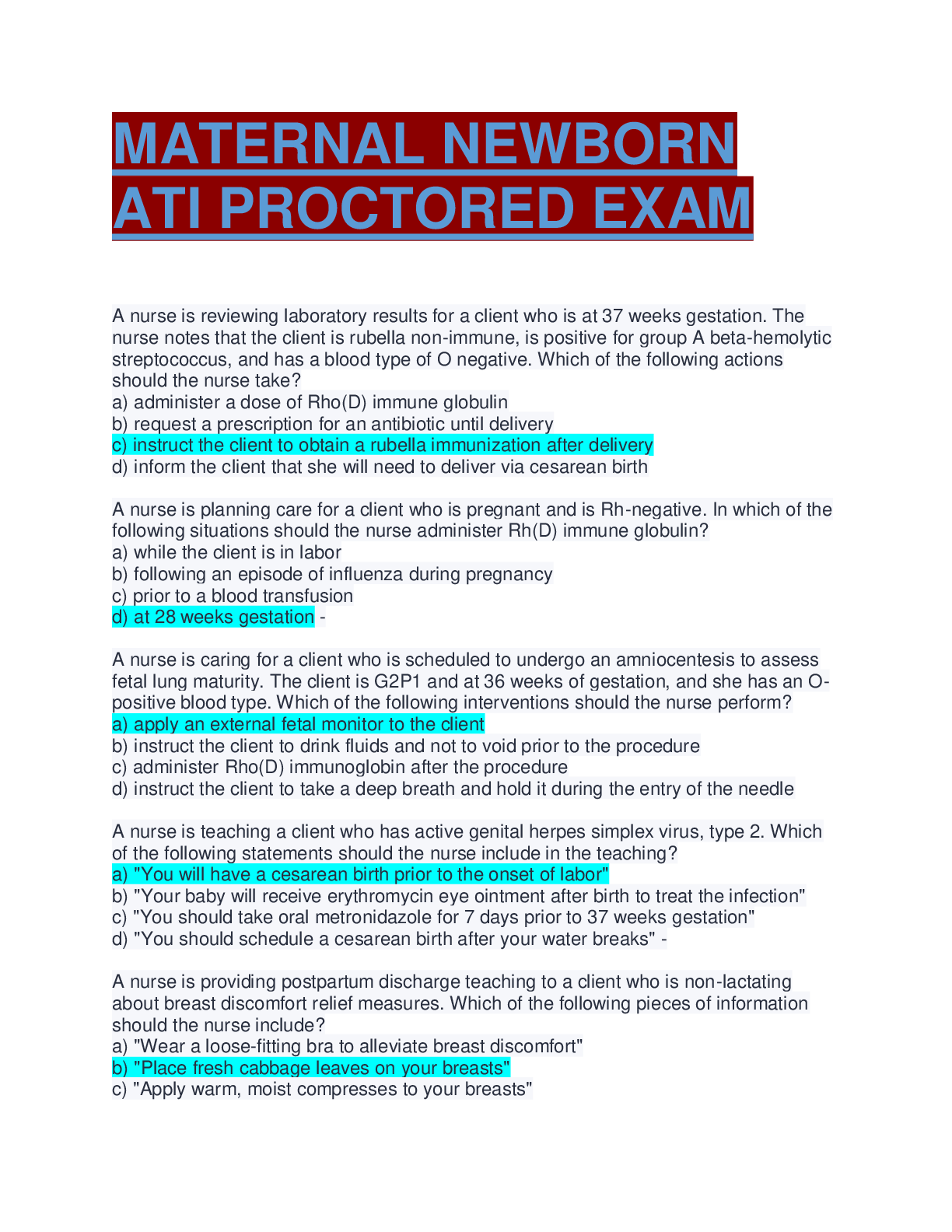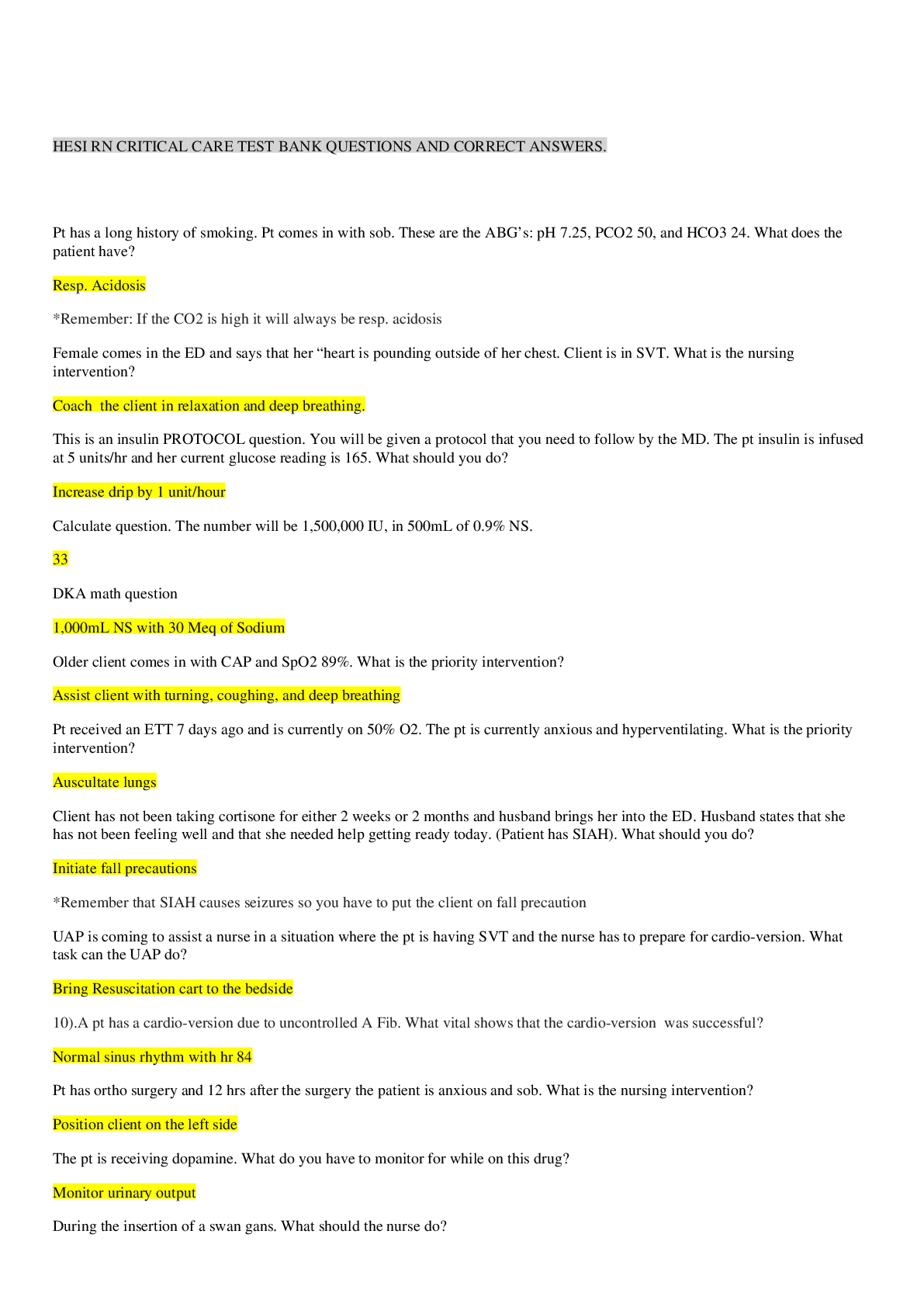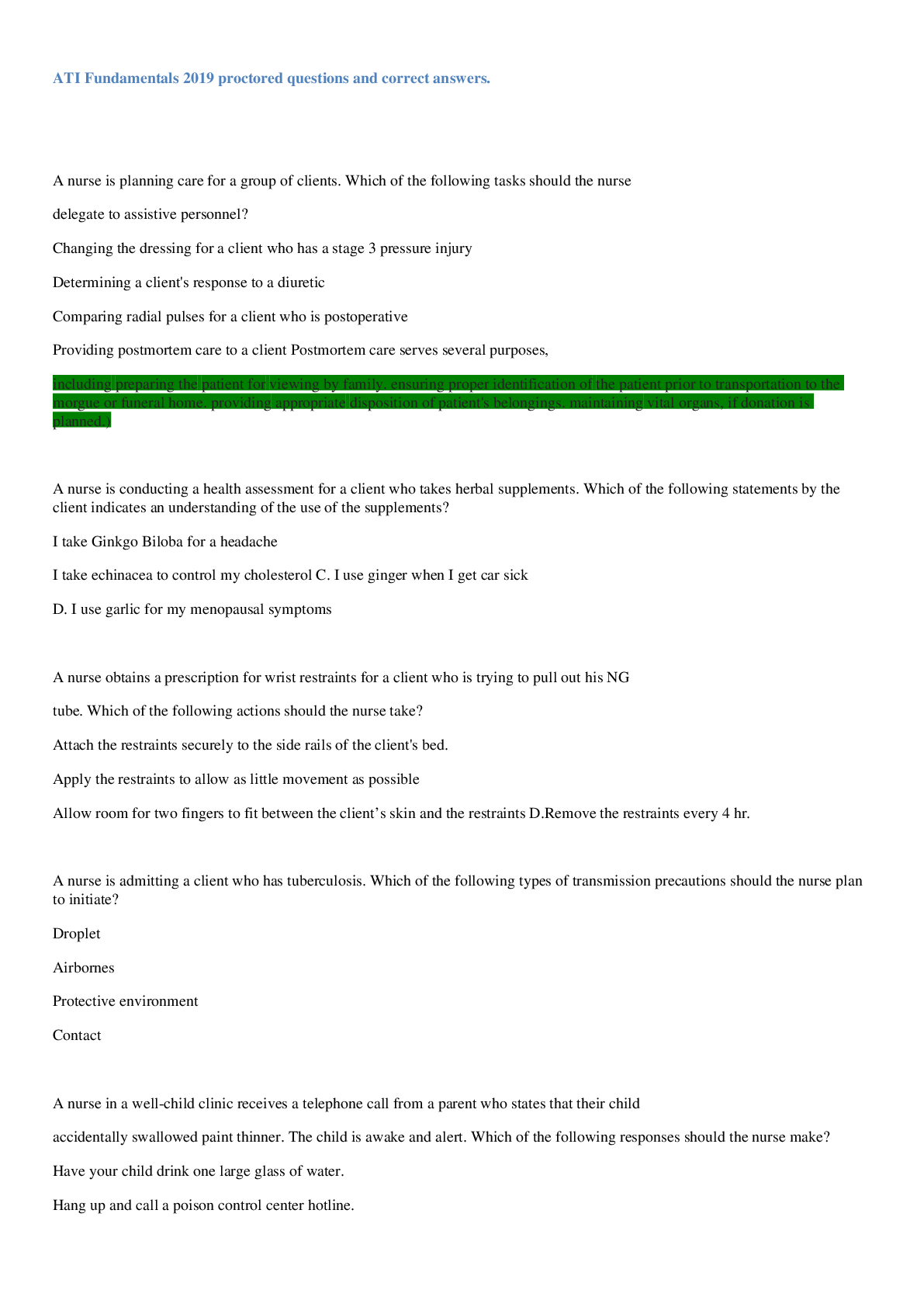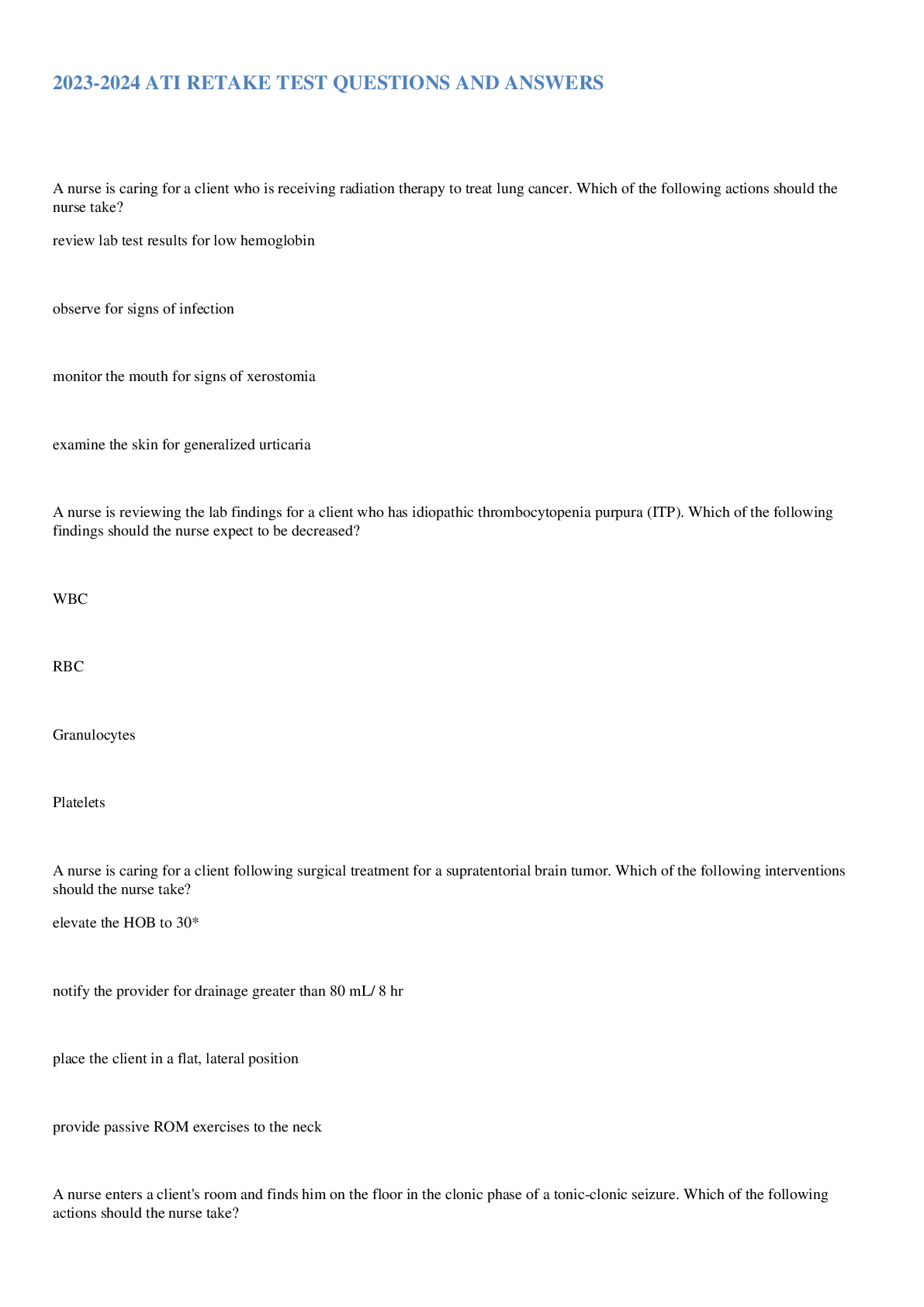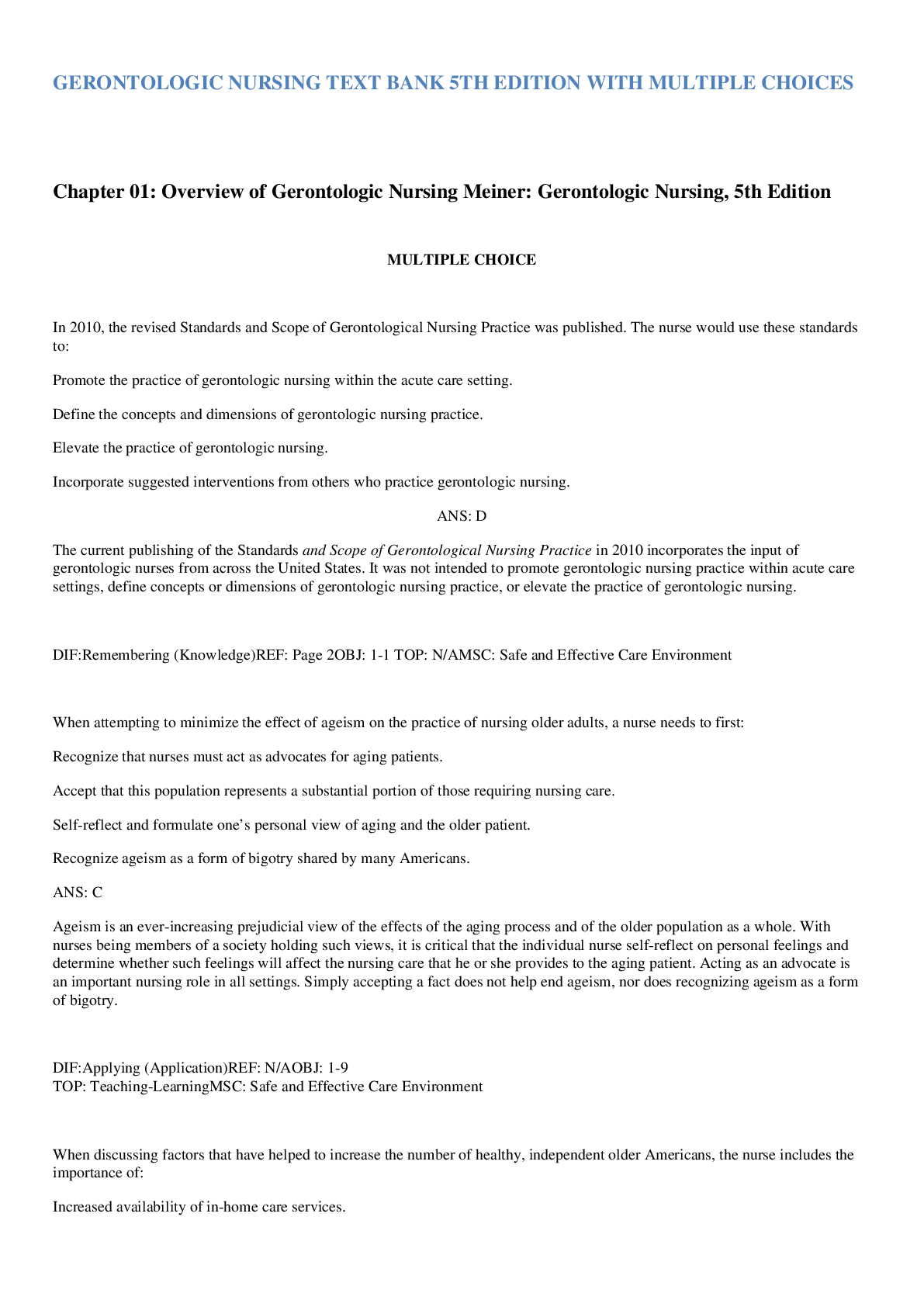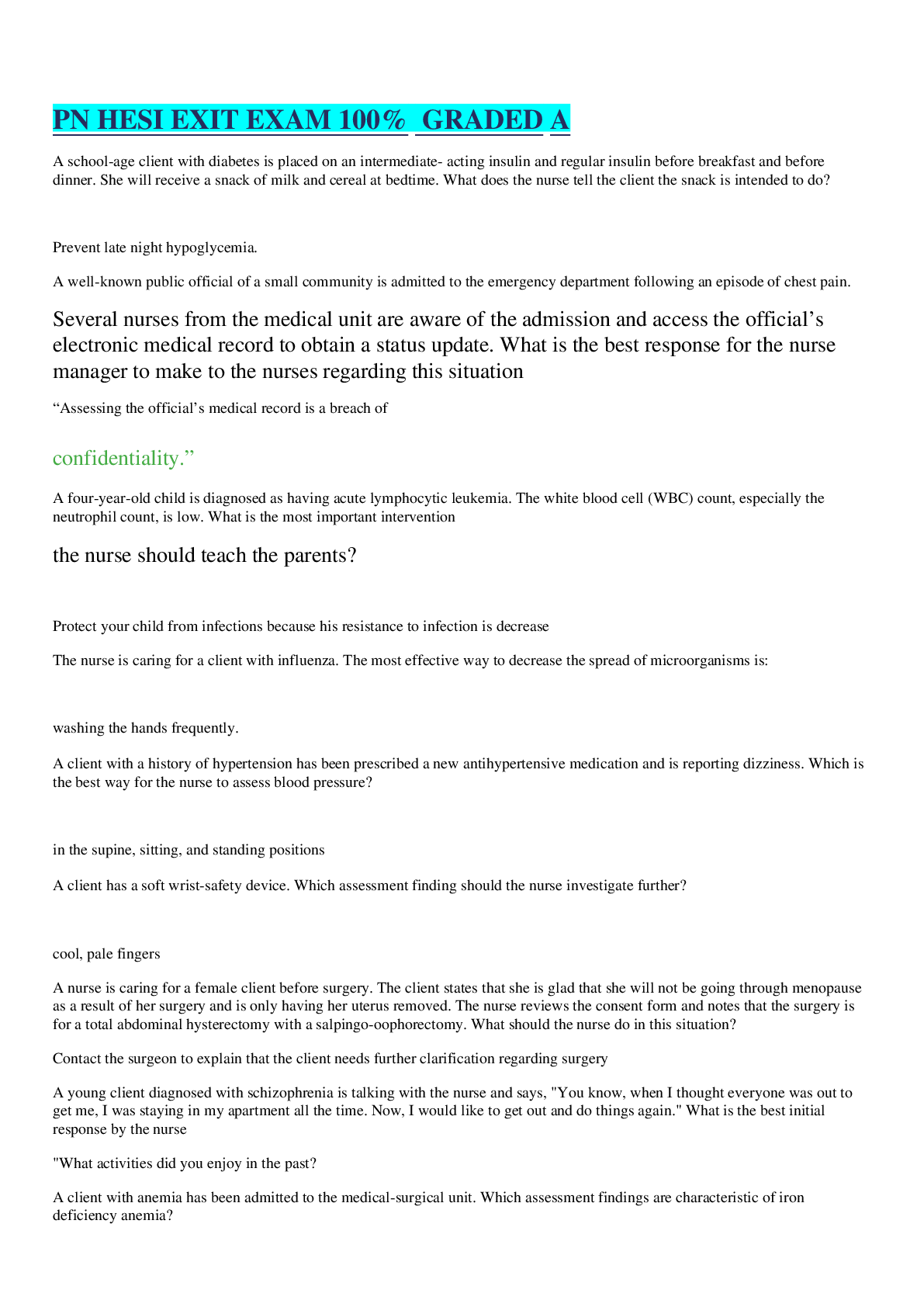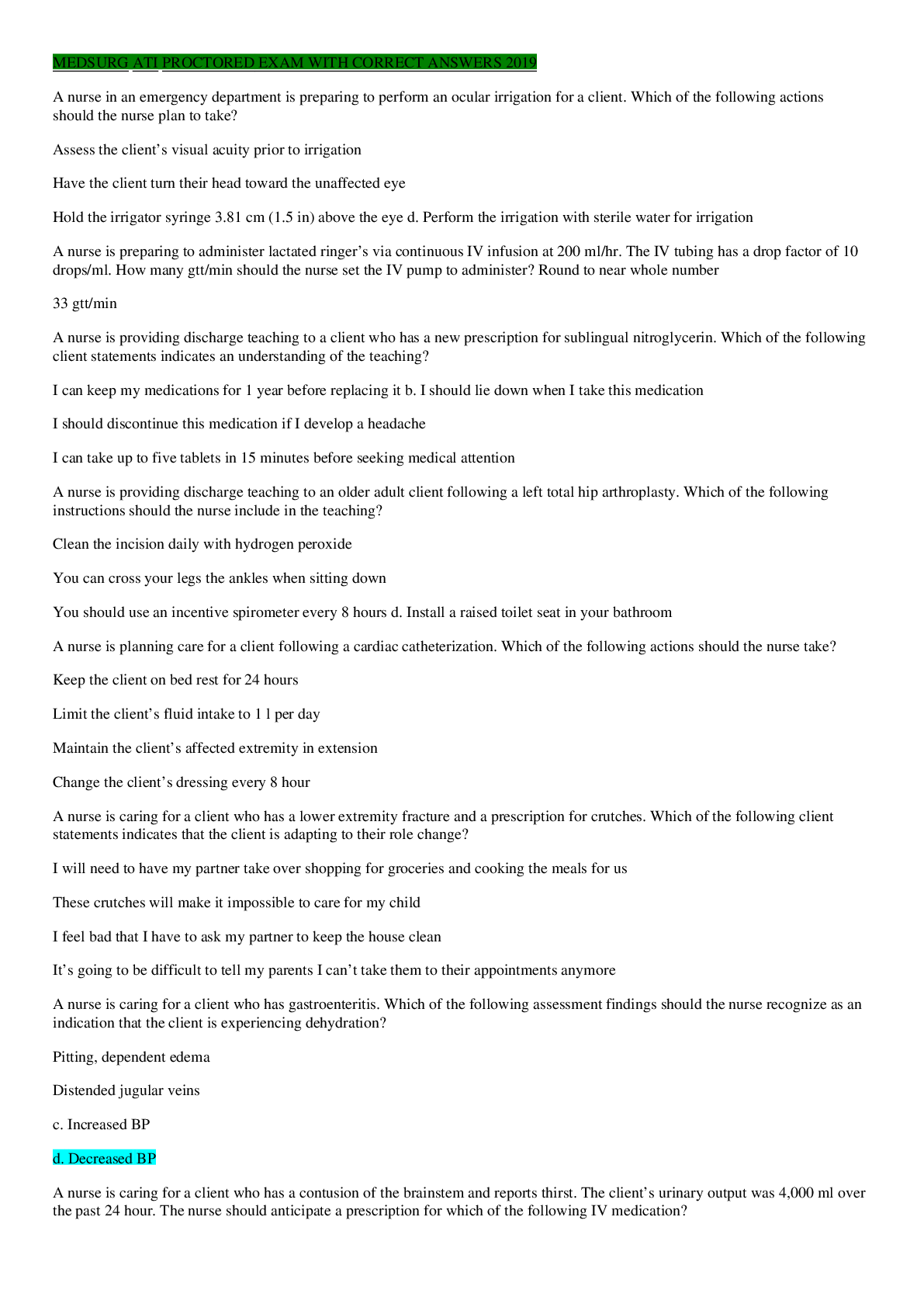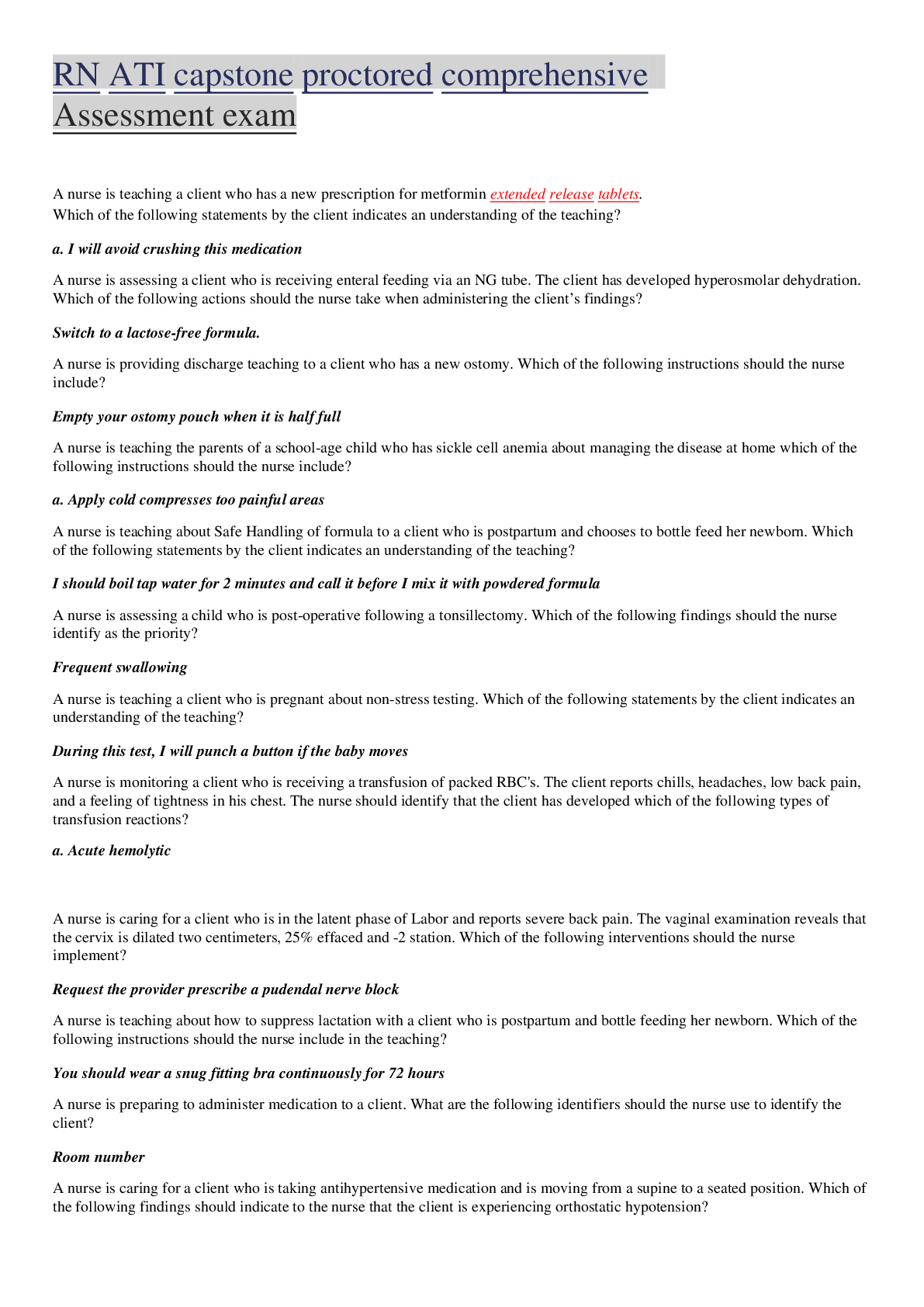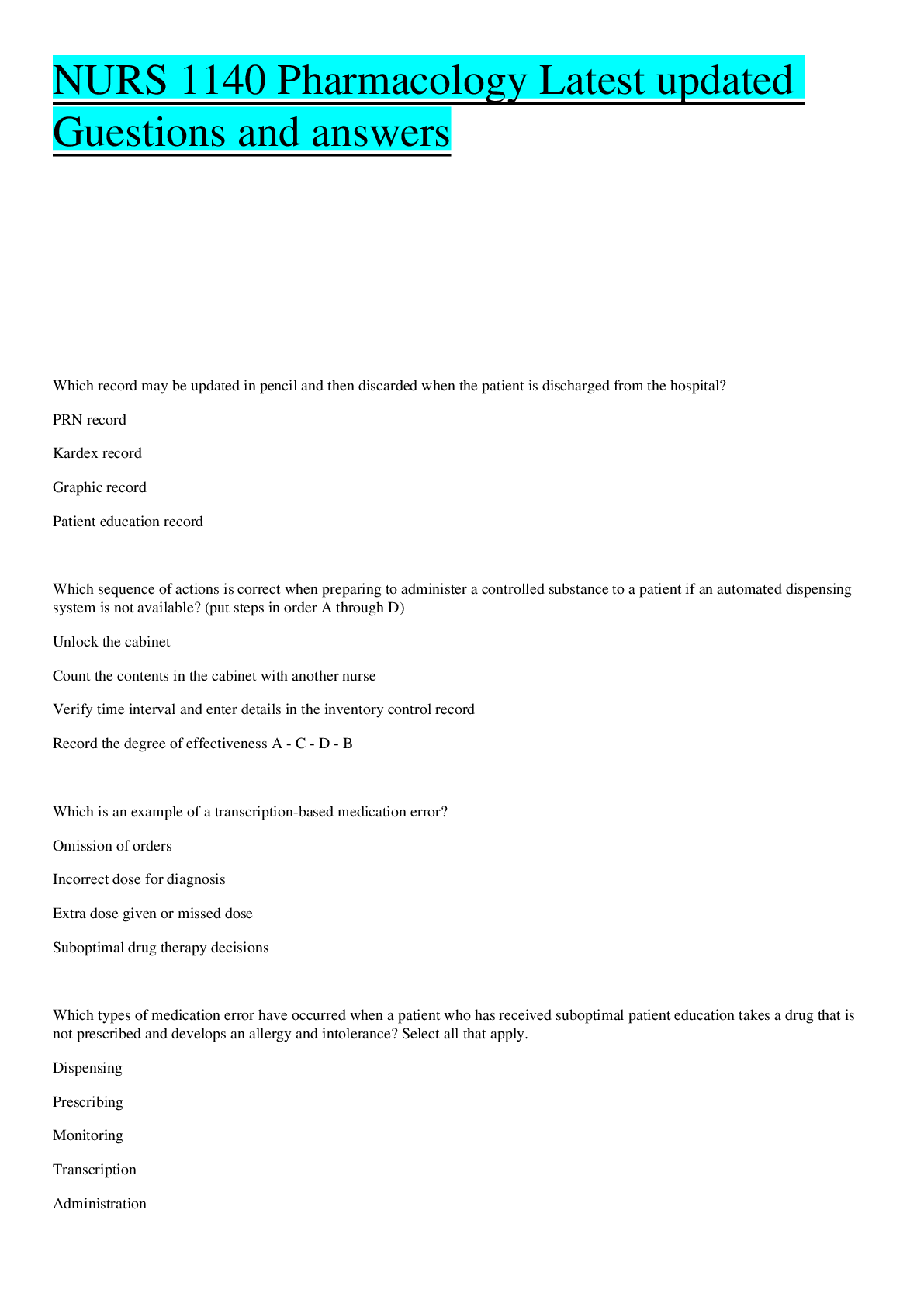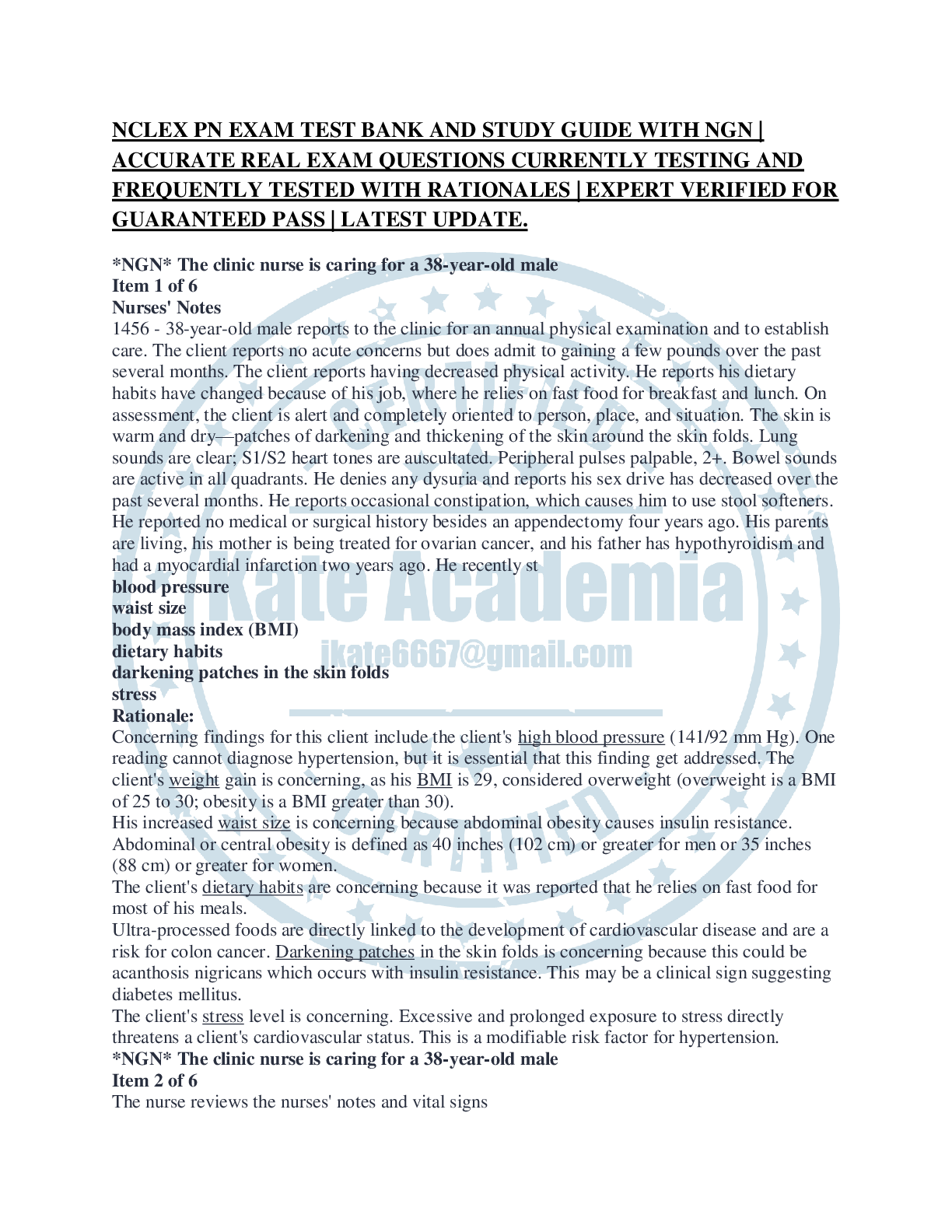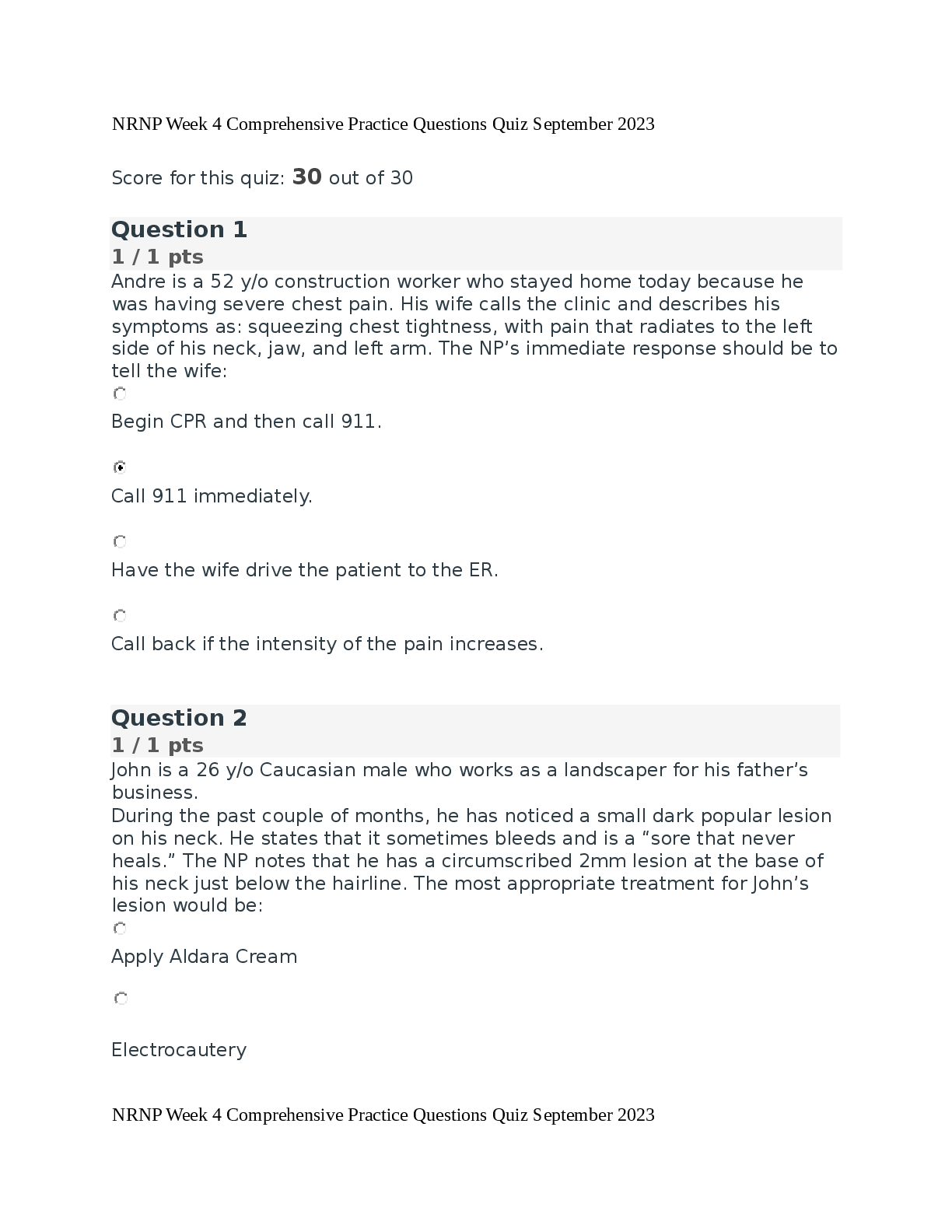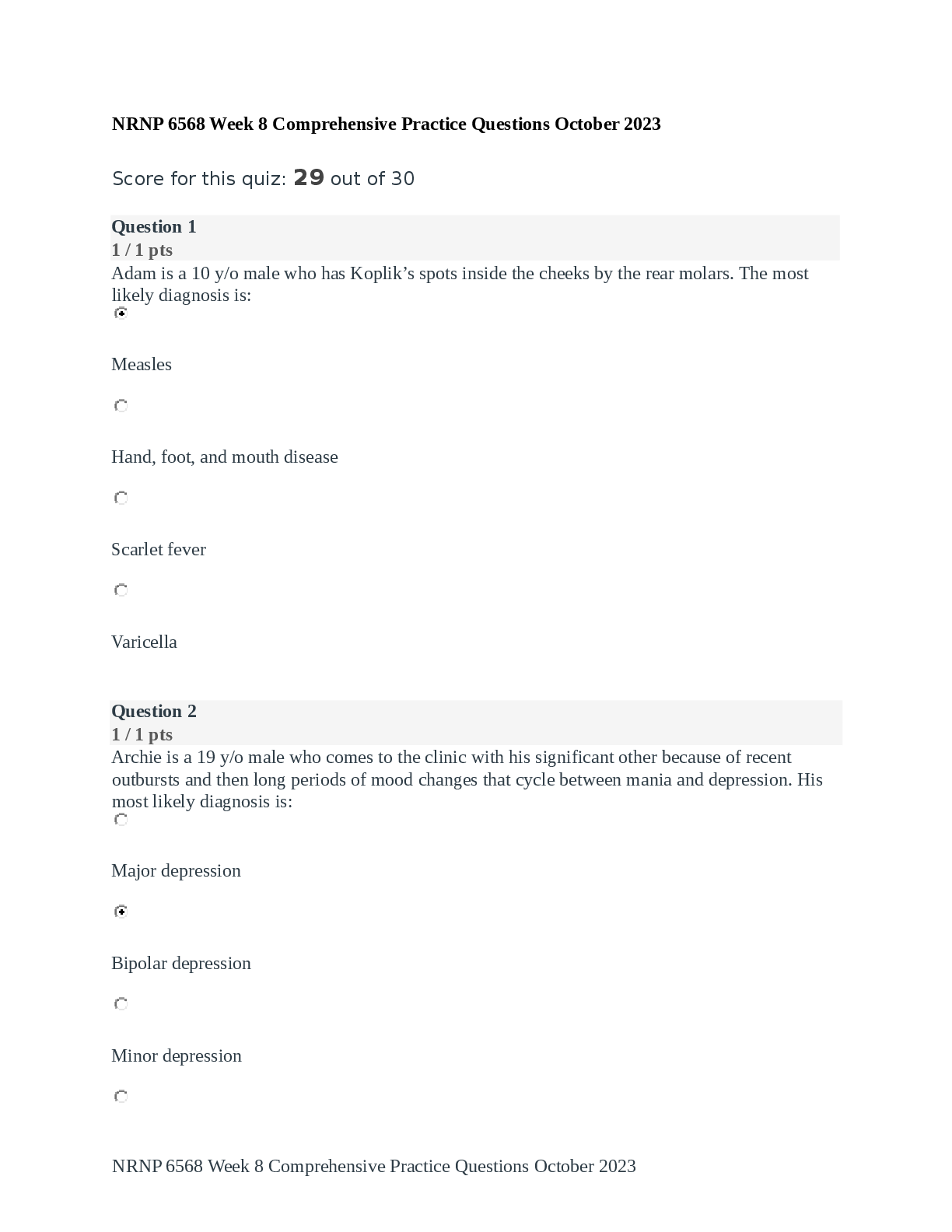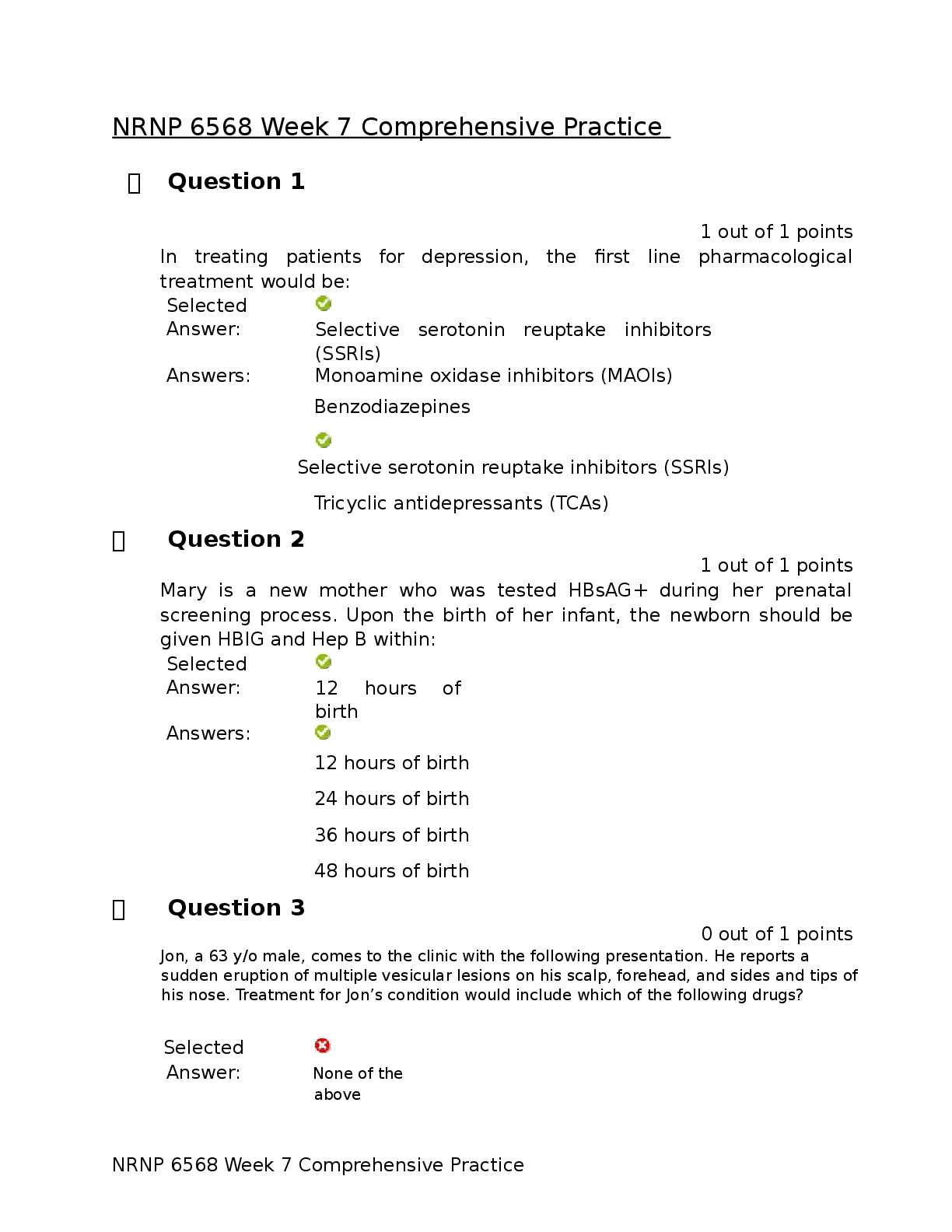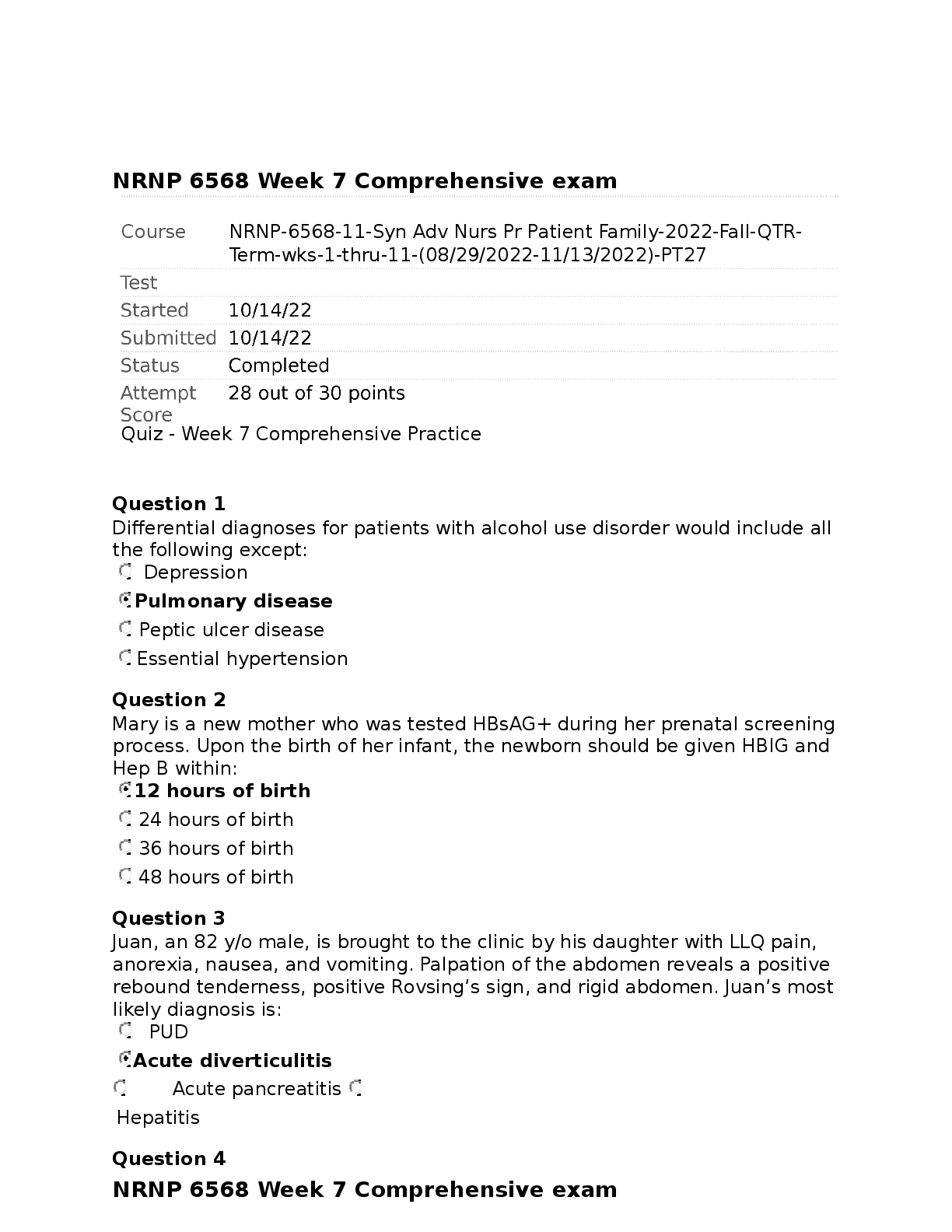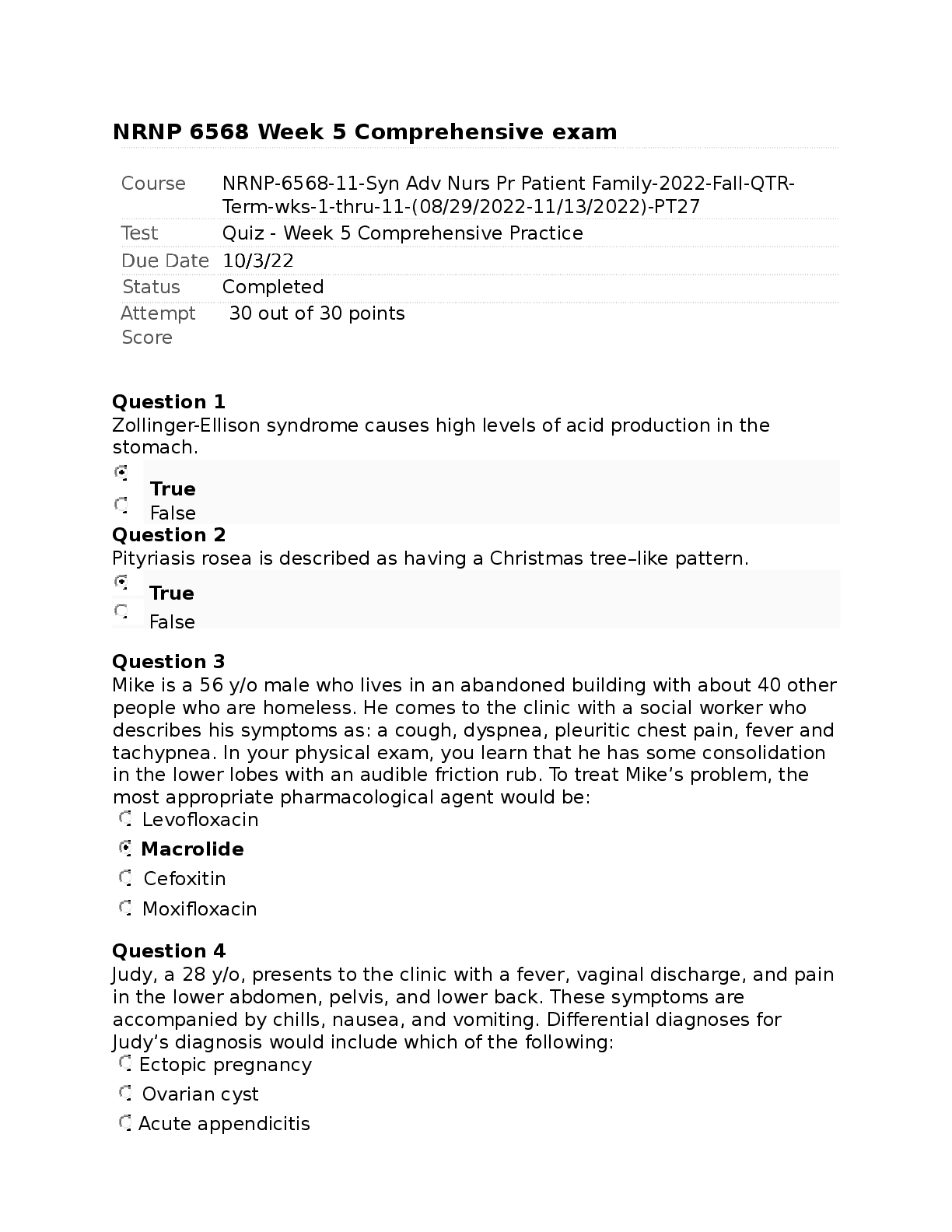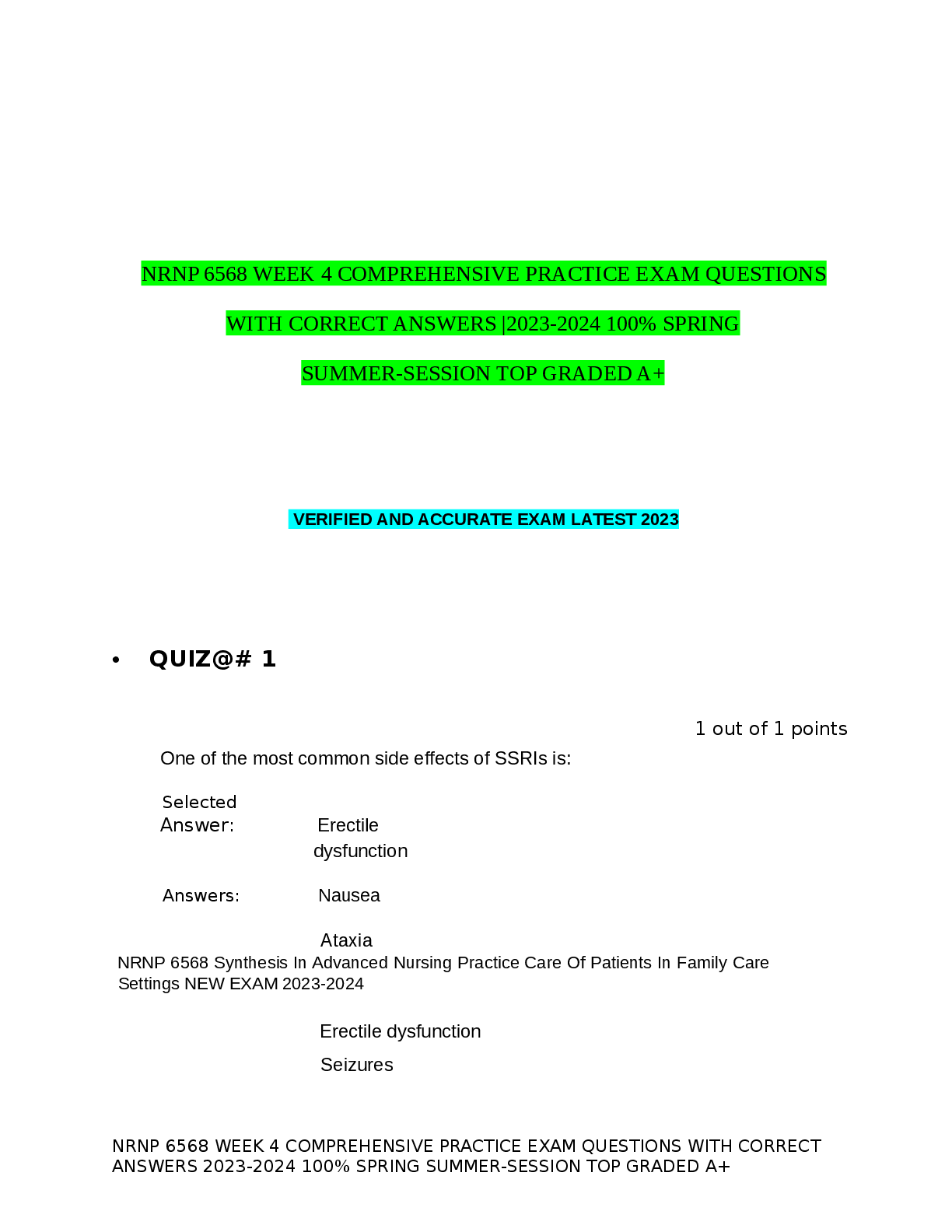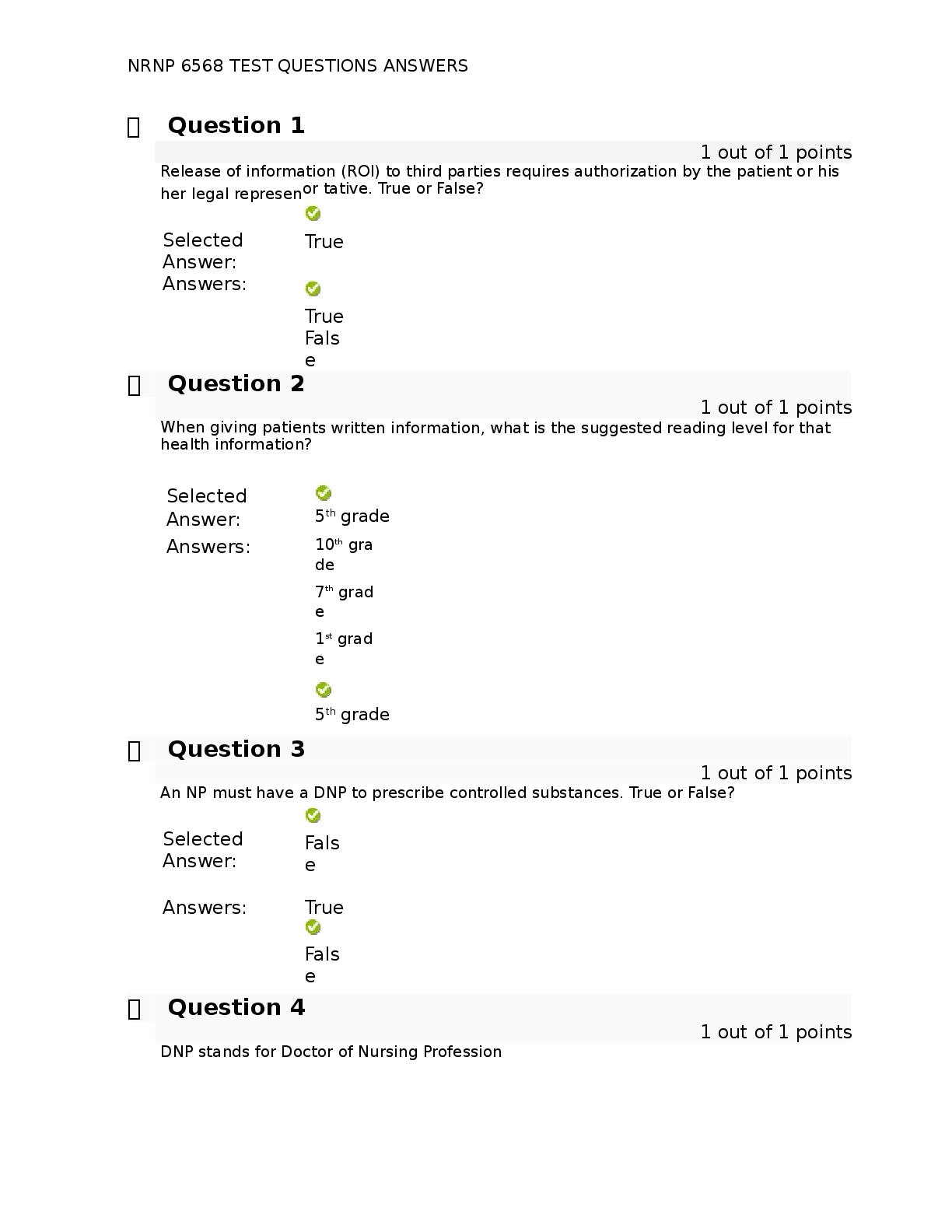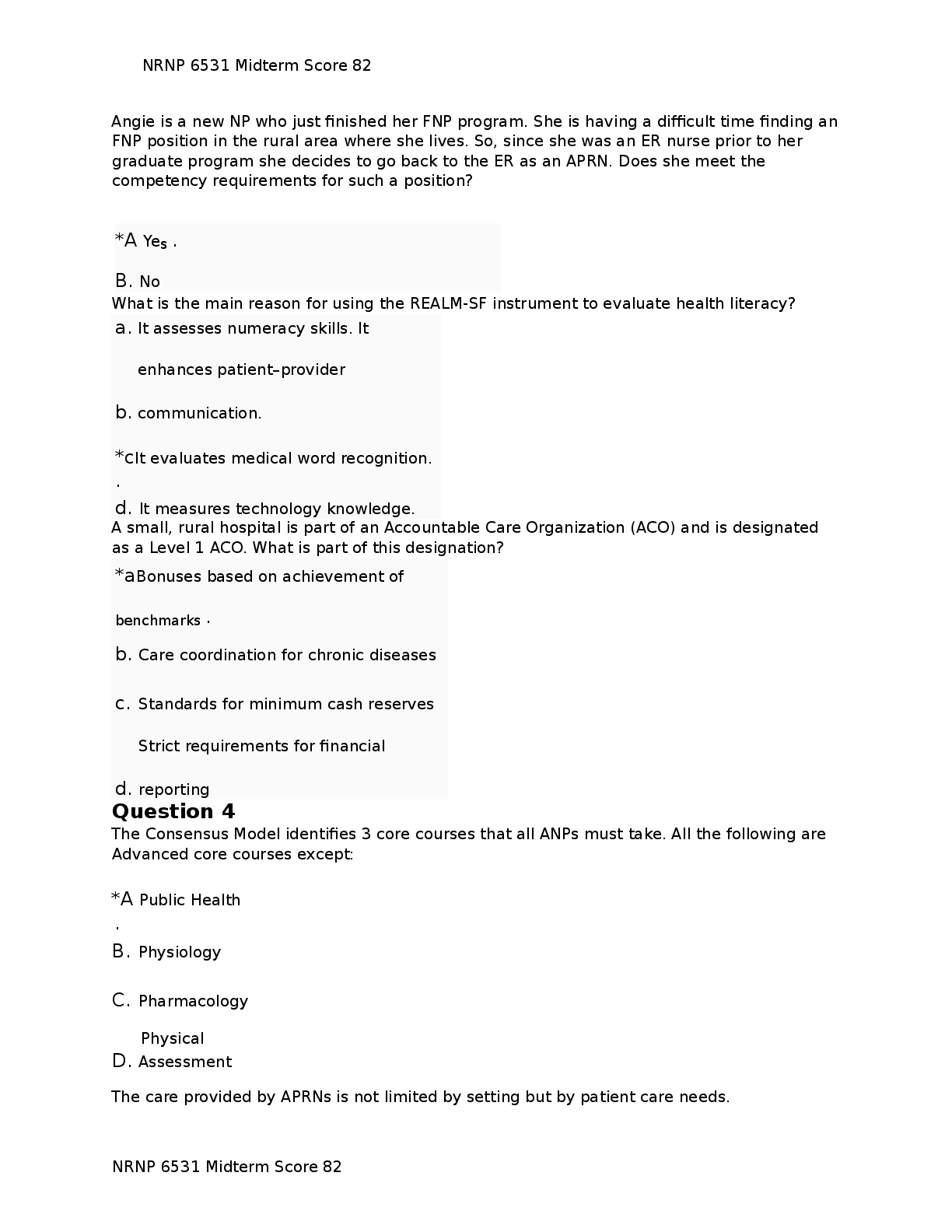NURS612 PRACTICE EXAM quiz 1 and 2
Document Content and Description Below
NURS612 PRACTICE EXAM quiz 1 and 2 Describe how you test the extra ocular movements (CN II, IV & VI). What is normal and abnormal? - ans-Eye movement is controlled by six extraocular muscles and C ... Ns III, IV, and VI. To evaluate eye movement, use four techniques: First, have the patient watch your finger move through the six cardinal fields of gaze. Sustained or jerking nystagmus should not occur. But keep in mind that a few beats of horizontal nystagmus may normally occur. Second, have the patient follow your finger vertically from the ceiling to the floor. The globes and upper eyelids should move smoothly without eyelid lag or exposure of the sclera. Third, test extraocular muscle balance using the corneal light reflex. With the patient looking at a nearby object, shine a light on the nasal bridge. The eyes should converge and reflect the light symmetrically. Fourth, if the corneal light reflex is imbalanced, perform the cover- uncover test. As the patient stares at a fixed point nearby, cover one eye and observe the uncovered eye. Then remove the cover and observe that eye as it focuses on the object. Note any eye movement (any eye movement, pt. Should be referred to ophthalmologist). How do you inspect and test and the iris and the pupil? How do you document normal and abnormal? - ans-IRIS- pattern should be clearly visible, note color, PUPILS- PERRLA Note: irregular shape Miosis- pupil constriction < 2mm→ drug abuse Mydriasis- pupil dilation > 6mm→ CN3 damage; acute angle glaucoma; drug abuse Failure to respond with increased light- retinal degeneration; optic nerve CN2 destruction, mid brain synapsis Argyll Robertson pupil- irreg. Shaped pupils fail to constrict with light but constrict with convergence, usually caused by neurosyphylis or lesions in midbrain Anisorcoria- unequal size pupils- congenital Iritis constrictive response- acute uveitis common unilateral; constriction of pupil accompanied by pain and red eye Oculomotor nerve damage (CN3) - pupil dilated and fixed; one eye deviated laterally and downward Adie pupil- affected pupil dilated and reacts slowly or fails to react to light. Accompanied by diminish tendon reflexes as with diabetic neuropathy or alcoholism What is the difference between objective and subjective data? What components of the health history are objective and subjective? - ans-Subjective data is gathered from the patient telling you something that you cannot use your five senses to measure. Objective data is the information that we can gather using our 5 senses. It is either a measurement or an observation. Components that are subjective include patients description of review of symptoms, past medical/social history. Components that are objective include physical exam of review of symptoms, vital signs, lab values or test results. How do you approach sensitive issues when interviewing a patient? - ans-Provide privacy, avoid confrontation, be direct and firm, do not apologize for asking questions, do not ask leading questions, do not push too hard, always use language that is understandable to the patient, but not patronizing. What does it mean to be culturally aware and culturally competent when caring for patients with diverse backgrounds? - ans-Culturally competent requires one to be sensitive to a patient's heritage, sexual orientation, socioeconomic situation, ethnicity, and cultural background. Culturally aware refers to understanding one's own biases, stereotypes, prejudices, and assumptions of others who are different from them. What are the concepts of developing a relationship with the patient? - ans-Make every effort to sense the world of the individual patient as that patient senses it -each of us is unique -first meeting with the patient sets the tone for a successful partnership -discover details about a patient's concerns -explore expectations for the encounter -display genuine interest, curiosity, and partnership -Communicate effectively What are effective communication strategies when obtaining a health history? - ans-Establishing effective communication with the patient, the provider needs to built; -Courtsey -Comfort -Connection -Confirmation What is a patient-centered question? Give examples. - ans-How will you like to be addressed? How are you feeling today? What will you like us to do today? What do you think is causing your symptoms? Have you prepared advance directives? How private of a person are you? What are potential barriers of patient and provider communication? - ans--Patient curiosity about the provider -Anxiety -Silence -Depression -Seduction -Anger -Avoiding the full story -Financial considerations What is the structure and the components of a patient history? What kind of patient information is obtained in each section? - ans-Patient identifiers Chief complain HPI- history of present illines PHM- past medical history FH- family history SH- social history [Show More]
Last updated: 1 year ago
Preview 1 out of 27 pages
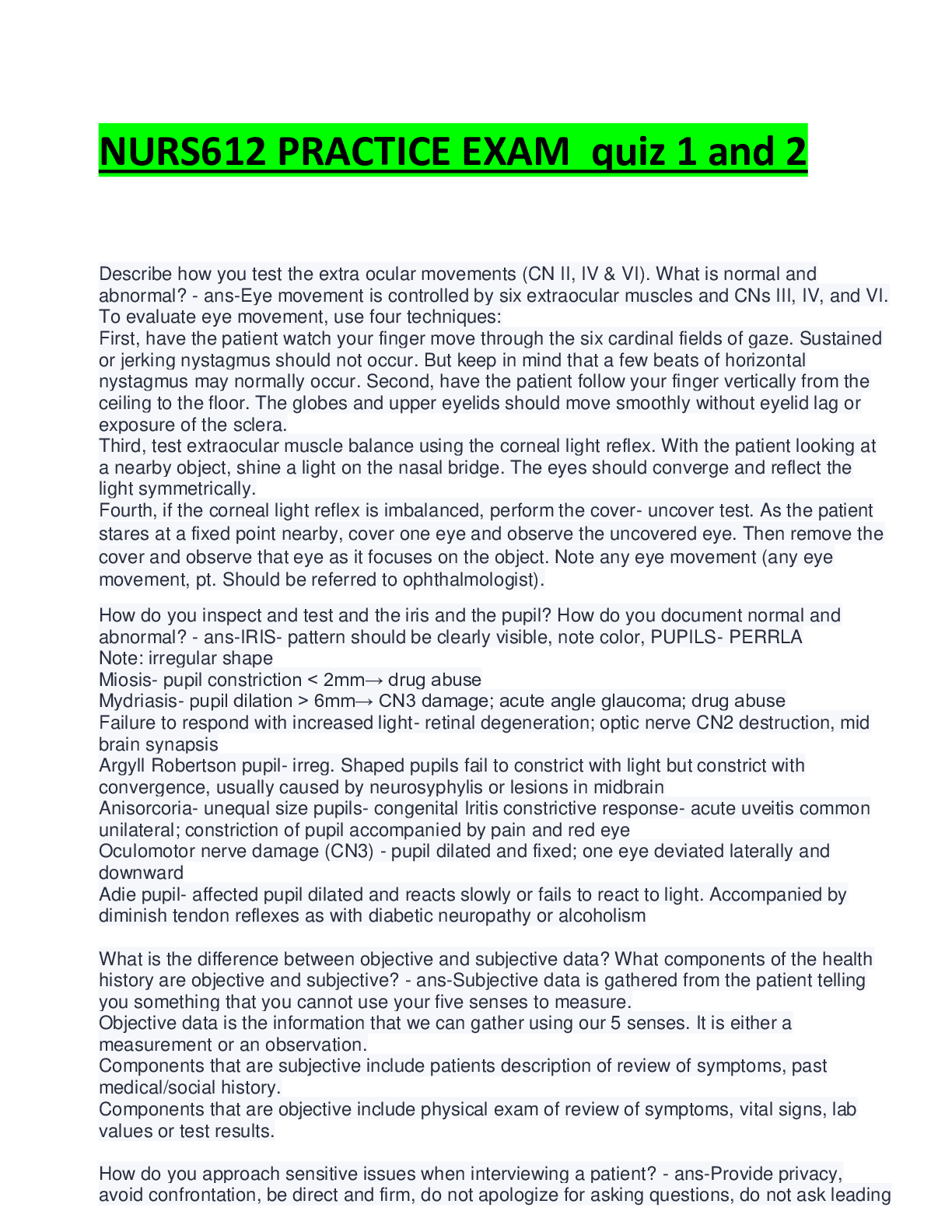
Buy this document to get the full access instantly
Instant Download Access after purchase
Buy NowInstant download
We Accept:

Reviews( 0 )
$18.00
Can't find what you want? Try our AI powered Search
Document information
Connected school, study & course
About the document
Uploaded On
Mar 14, 2024
Number of pages
27
Written in
All
Additional information
This document has been written for:
Uploaded
Mar 14, 2024
Downloads
0
Views
63

